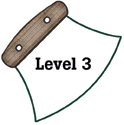|
National Science Education Standards
In most chemical and nuclear reactions, energy is transferred into or
out of a system. Heat, light, mechanical motion, or electricity might
all be involved in such transfers. (Page 155)
The sun is a major source of energy for changes on the Earth’s
surface. The sun loses energy by emitting light. A tiny fraction of that
light reaches the Earth, transferring energy from the sun to the Earth.
The sun’s energy arrives as light with a range of wavelengths, consisting
of visible light, infrared, and ultraviolet radiation. (Page 155)
|
|
Benchmarks
Most of what goes on in the universe—from exploding stars and biological
growth to the operation of machines and the motion of people—involves
some form of energy being transformed into another. Energy in the form
of heat is almost always one of the products of an energy transformation.
(Page 85)
Heat can be transferred through materials by the collisions of atoms
or across space by radiation. If the material is fluid currents will be
set up in it that aid the transfer of heat. (Page 85)
|


